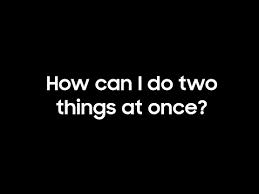 If you’ve been reading our blog for any length of time, you know that Richard and I continually preach that your portfolio should only have qualified donors in them. Again, qualified to us means, in addition to meeting an amount-given threshold, the donor has actually indicated to you they want to relate to you in a more personal way through personal visits, phone or email. (Watch our recent “Question of the Month” video to learn more.)
If you’ve been reading our blog for any length of time, you know that Richard and I continually preach that your portfolio should only have qualified donors in them. Again, qualified to us means, in addition to meeting an amount-given threshold, the donor has actually indicated to you they want to relate to you in a more personal way through personal visits, phone or email. (Watch our recent “Question of the Month” video to learn more.)
Here’s why I want to address this issue again. All of us at Veritus are regularly questioned by major gift fundraisers on how can they possibly cultivate their donors and qualify donors at the same time. “I just don’t have the bandwidth,” they say.
I know it may feel overwhelming to you. But it’s actually very doable… if you have a plan. And it’s not only doable, it’s necessary if you’re going to be successful. I cannot stress that enough. Having a portfolio that includes unqualified donors will hurt your success in cultivating the qualified donors. You’ll end up focusing on the wrong donors, and you won’t spend enough time with the donors who actually want a deeper relationship with you and your organization.
We see this happening all the time. And it’s hurting your revenue growth.
Here’s one scenario for you. Let’s say, right now you have 150 donors in your portfolio, but if you really took stock of it, only 50 of them would you consider “qualified.” (Your portfolio may be a different number, but the point is to figure out what that number is.) How do you handle this? Before I go into specifics, I first want you to meet with your manager so that you are both on the same page about your portfolio.
Get your manager to agree you only have 50 qualified donors that you are cultivating, and you have to qualify the other 100. By the way, only 30-35 of those 100 will actually end up in your portfolio as qualified, so come to agreement that you’ll be needing a pool of 200 more donors or so to get you to a full portfolio of 150. (A pool of 300 unqualified donors often yields only 100 qualified donors.)
So you get agreement with your manager on this. Now what?
- Take the unqualified donors out of your portfolio and put them in a qualifying list. (By the way, we have a free template called the Marketing Impact Chart that has this built into it. Just click here to get it.)
- Now, you have 50 donors in your portfolio. Tier those 50, A-C. (If you don’t know how to tier, click here and find out how to do it.) Then, set revenue goals and create your 12-month communication strategy for them. Now you have your plan for the 50 qualified donors.
- Take the 100 remaining donors (and add more potential major donors into the pool as needed) and create a hierarchy of who to start qualifying. If you don’t currently have a qualifying process in place, you can download our free white paper to figure out how to do this. Remember, keep these donors in a separate place from the 50 qualified donors. In Veritus’ Marketing Impact Chart we have our qualified donors in one tab, and qualifying pool of donors in another.
- As you start qualifying the donors, you move them into your portfolio, create a revenue goal and strategy plan, tier them, and start cultivating.
- For donors that don’t make it into a portfolio (which will happen to about 2/3 of the donors), they will go back into your mid-level or regular donor stream of cultivation strategies.
Our team at Veritus is working with over 250 major gift officers right now, working alongside of them, going through this same process with many of them. It’s not easy to do this on your own. But if you are disciplined enough, and you have a plan, you can do it. You can cultivate qualified donors and you can qualify your previously unqualified donors at the same time.
The first step, though, is to be honest about your current portfolio. We call it a “gut check” at Veritus. Who is really qualified? That is the first step you need to take. You will save yourself from ALL KINDS of problems by having a truly qualified portfolio of major donors. Take that first step.
Jeff
PS — If you’d like help, we would love to talk with you. We can guide you through this process and work with you to greater success. Send us an email and we’ll get right back to you.







0 Comments